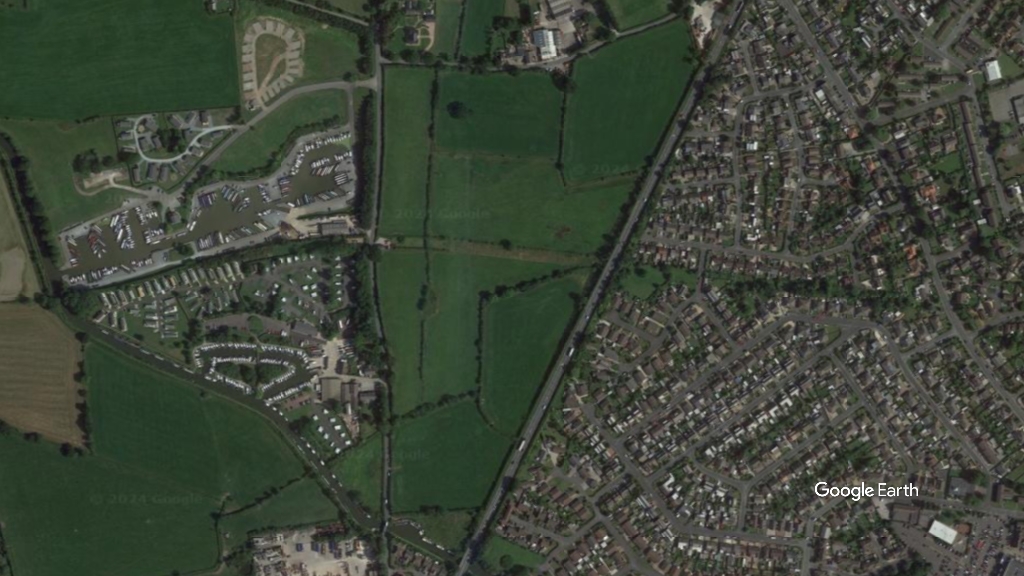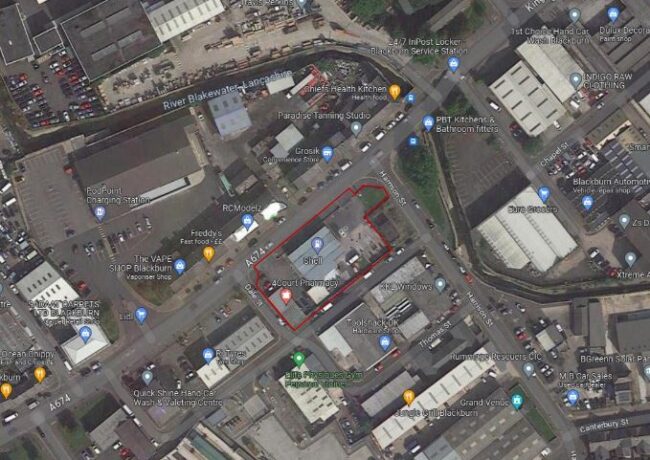Preston poised to overturn approvals on 1,000 homes
Preston City Council is set to overturn decisions on 10 applications totalling 974 homes, following an appeal by South Ribble that brought far-reaching implications for how central Lancashire councils assess housing numbers.
A total of 15 applications that were all previously approved are included on a bumper agenda for a special planning committee meeting at Preston in February, with 10 set to have their planning consents reversed.
Projects recommended for rejection include Wainhomes’ plans for 151 homes at Woodcroft Farm, and Gladman Developments’ proposals for 145 homes at Whittingham Lane.
All the schemes on the agenda were previously granted consent, but were still in negotiations over section 106 agreements and were yet to be formally approved.
The shift in Preston’s approach is due to changes in how the council assesses its five-year land supply and requirement for more homes, with a lower annual delivery figure now in play. This comes following an appeal ruling in Preston’s neighbouring council, South Ribble.
In December, a Government planning inspector ruled in favour of South Ribble, in an appeal brought by Wainhomes over the rejection of 100 homes it had proposed on Chain Lane.
The inspector dismissed the appeal, and, in doing so, undertook a review of the housing supply position of South Ribble.
South Ribble, Preston, and Chorley councils are working together to deliver a joint Central Lancashire Development Plan and see themselves as one housing market. The targets for each area are based on the aggregate need for each council, with some councils taking on their neighbours’ requirements under a memorandum of understanding signed in 2017.
According to the inspector, the housing assessment methodology supporting the agreement is out of date. Under the Government’s new recommended standard methodology, which reduces the number of homes that need to be built annually, South Ribble can now prove a five-year land supply, and so can Preston.
Due to the policy shift, Preston has brought back to committee several applications approved under the previous figures, which it believes could have been wrongly determined.
The Government’s standard methodology for calculating the homes needed in each council area has proved controversial since its inception in 2019. It was intended to help increase the pipeline in areas where house prices are high, but critics say this creates a bias towards the South and have reduced the targets in some areas of the North.
Many within the development community have suggested this could lower housing development ambitions in the North, with more homes needed to aid economic growth despite already low house prices.
Meanwhile, the creation of the Central Lancashire Local Plan, which encompasses Preston, Chorley and South Ribble, is already six months behind schedule. According to a report to Preston City Council this week, the delay is expected to worsen because councils need time to consider developers’ suggestions for sites. A completion date for the plan is scheduled in 2022, 18 months later than first proposed.
The MoU agreement between the councils was based on the delivery of 417 homes annually in Chorley, 417 in South Ribble, and 507 in Preston.
Under the standard methodology, the total needed to be built across all three authorities is now 1,026.
This means 410 homes in Preston, 334 in South Ribble, and 282 in Chorley.
The full list of projects recommended for refusal are:
- BCA Management – 30 homes at land adjacent to 329 Preston Road. Smith & Love is the planning consultant and the architect is Michael Jackson Associates
- Setantii Holdings – 65 homes at Goosnargh Cottage on Whittingham Lane. Aldrock is the architect
- Setantii Holdings – 80 homes on land south of Whittingham lane in Goosnargh. Also designed by Aldrock
- Gladman Developments – 145 homes on land north of Whittingham Lane, Goosnargh. CSA Environmental is the architect
- Michael Wells – 87 homes on land north east of Swainson Farm on Goosnargh Lane. Emery Planning is consultant and DTPC designed the scheme
- Michael Wells – 40 homes on land at Swainson Farm. Emery Planning and DTPC are agent and designer of this scheme, too
- Andrew Bradshaw (farm owner) – 111 homes on land to the rear of 126A Whittingham Lane in Broughton. Emery Planning is consultant
- Gerald Gornall and the Community Gateway Association – 140 homes at Bushells Farm on land south of Mill Lane. The planner is PWA Planning and Woodcroft Design is the architect
- Wainhomes – 151 homes at Woodcroft farm on Garstang Road, with Emery Planning as consultant
- Story Homes – 125 homes on land to the north of Jepps Lane. PWA Planning is planner and Woodcroft Design is the architect
The five schemes minded for approval are:
- ASSH Investments – 21-storey building with 299 apartments at Foresters Hall on Great Shaw Street. David Cox Architects designed the scheme and PWA Planning advised
- Morris Homes – 48 homes at land to the north of Hoyles Lane and east of Sidgreaves Lane
- Bulwark – 280 homes at land off Riversway and west of Dodney Drive. Design by Pod is the architect and Steven Abbott Associates is the agent
- Homes England – 750 homes, plus the redevelopment of Whittingham and Goosnargh Sport & Social Club on the site of the former Whittingham Hospital. Barton Willmore is the agent and also assisted with design
- Story Homes – 195 homes on land north of Eastway. Gerald Eve advised on planning and Woodcroft Design is the architect
Join Place North West at our Lancashire Development Update on 13 February or in Preston for the Lancashire Social on 23 July.





Shocking decision to make. Imagine how much time and money has gone in to these applications. U-turns like this make a mockery of the planning system and local politics.
If members found the applications acceptable why not go ahead with the consents even if this means housing supply will exceed minimum requirements? It just shows the Council’s seek to deliver the bare minimum of homes and thereby perpetuating the housing crisis for those wishing to get on the ladder.
By NC
Agree with NC, and just because they can, does not mean they should
By Tannoy
Wonder if they all have agreed extensions of time, otherwise it may be a very costly decision for Preston…
By Intrigued
Erm……you cannot ‘overturn’ a decision already taken to approve planning permission. You can seek to ‘revoke’ a permission and you can also ask the Court to essentially quash that decision. However, you would have to pay the landowner/applicant compensation for the value of the permission which you had just revoked.So if a field is worth £300,000 without permission and £5million with you would have to pay the difference £2.7m…… I suspect the reality is that these ‘permissions’ are not actually permissions in that the decision notice has been sent out, but instead are minded to grant decisions by the Council subject to the signing of the legal agreements. If the Council now say we are not signing those agreements and refuse those applications that is not the same as ‘revoking ‘ a permission. Instead they will be fighting multiple appeals, simultaneously, with many barristers and consultants involved at huge costs to themselves ( and the applicants) with the prospect of losing some of them, because as others have pointed out, they have found them to be acceptable already and there is a need to have more than a 5 year housing land supply.
By Chris Weetman
In support of the LPA it appears a material change in circumstances has occurred. Assuming these applications were only minded to approve because they couldn’t show a supply at the time of committee and therefore the tilted balance (rightly) applied. However, the appeal decision materially alters the supply issue and the tilted balance no longer applies then they must be re-considered. The law is clear applications must be considered in respect of all material considerations in place at the time of decision, ie when the final decision is issued.
By DM Planner
I think what this demonstrates is that you need to get the s106 agreed and engrossed as soon as possible pre or post committee as you see this happening more often than is publicised.
A scheme that may have had a tilted balance in favour due to a shortfall of a five year supply could be subject to reconsideration if that authority can now demonstrate the supply and that’s but one issue. Imagine if a neighbourhood plan is made while the s106 is waiting to be signed, which could change the weighting to certain matters. This could result in a resolution to approve subject to a s106 being changed.
Of course, saying that you should sign is all well and good as I’m not responsible for trying to tie multiple landowners into one agreement or pay the relevant commuted sums!
By JohnMac
This is just a terrible example of planning, generally.
By Bert
They were on hold awaiting Gov ruling. They should be rejected as most are in open countryside. They should never have been approved in the first place.
By Paul Riley
The national planning changes in 2012 swung too far in favour of Developers. Yes it was right to encourage more house building but needs to be in the right places. Should be on brownfield sites or allocated land, not green field sites.
By David Herd